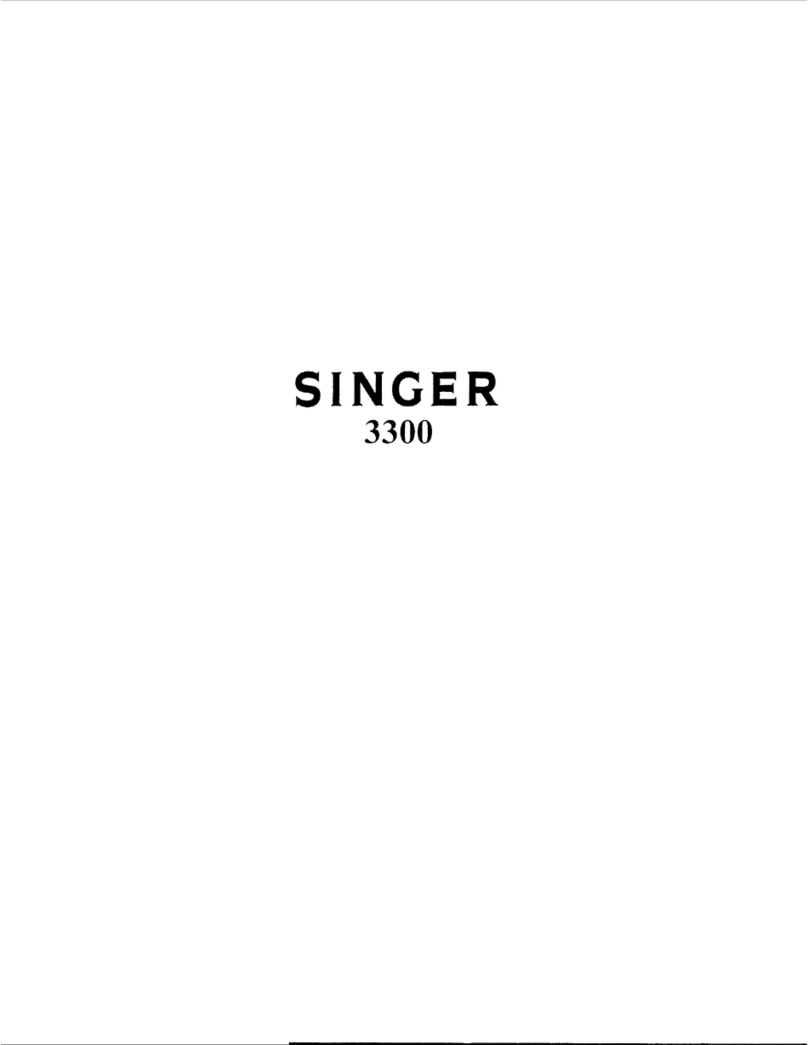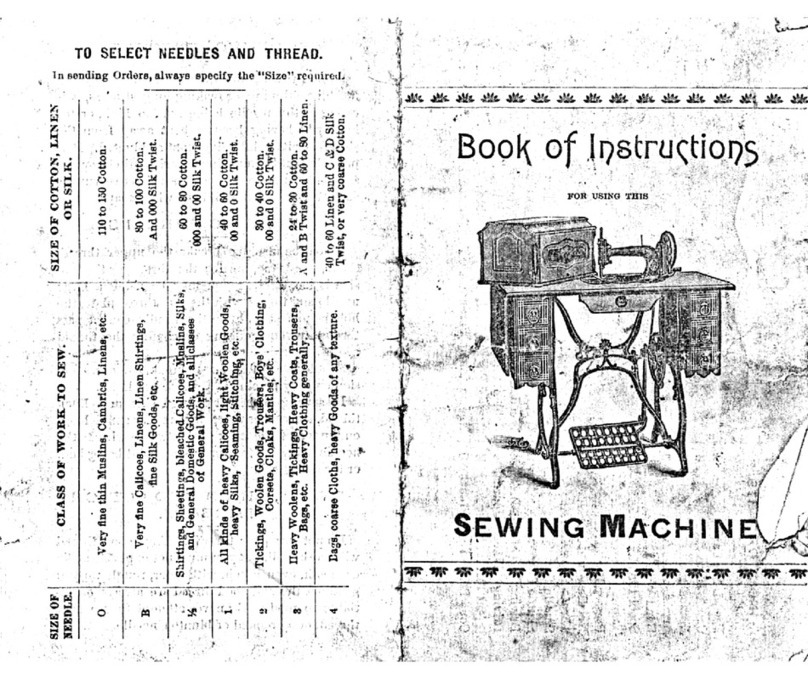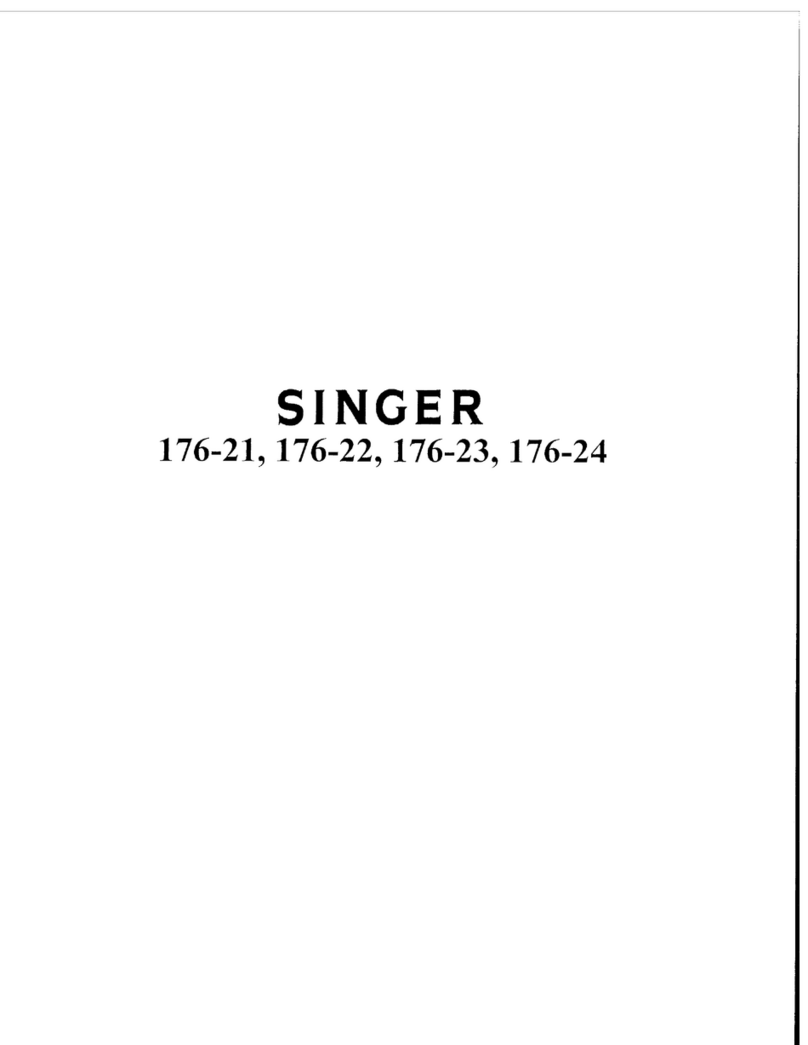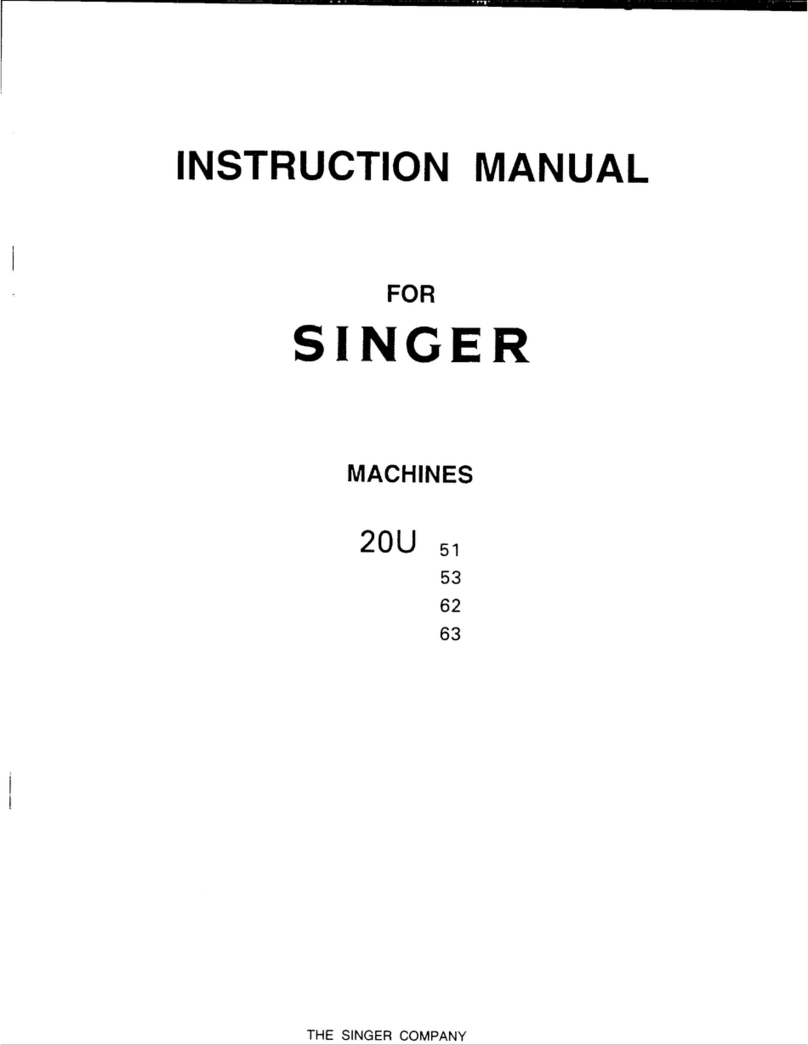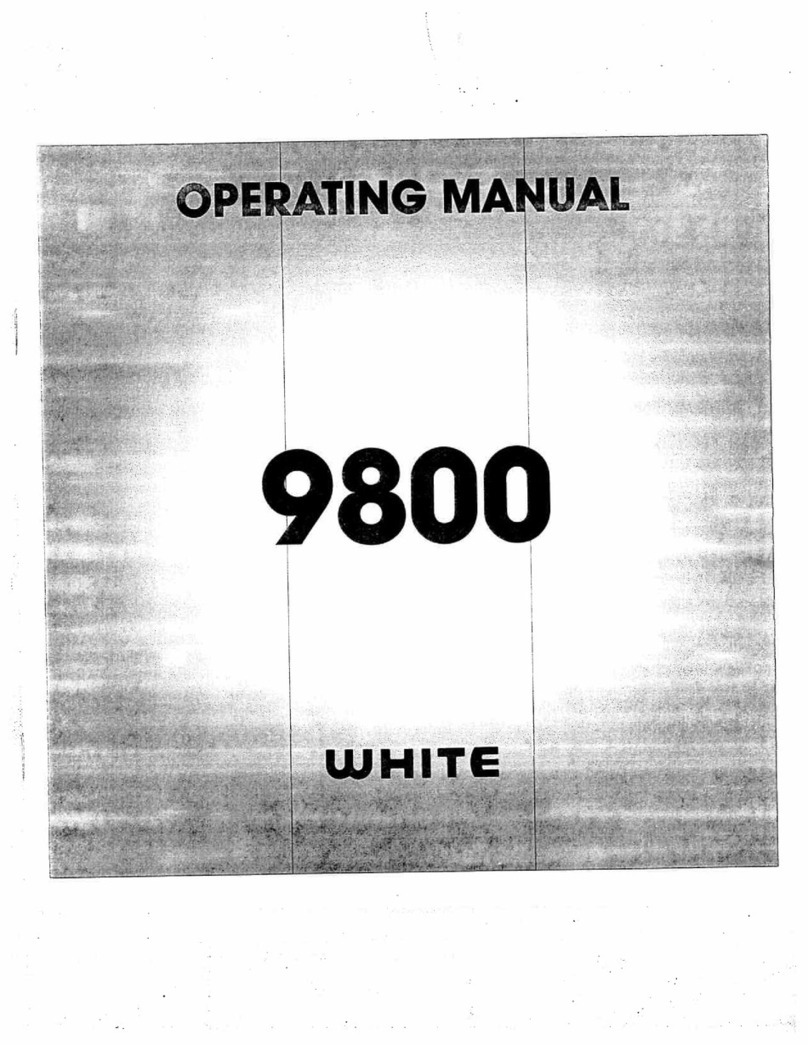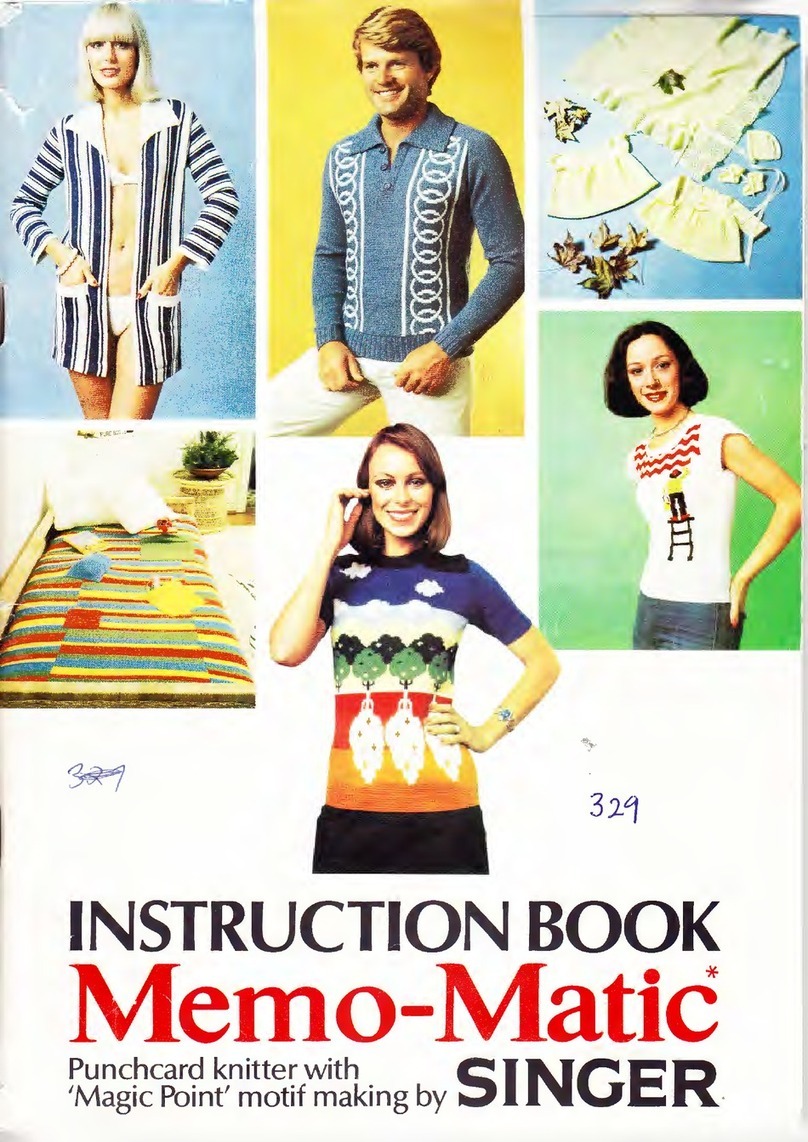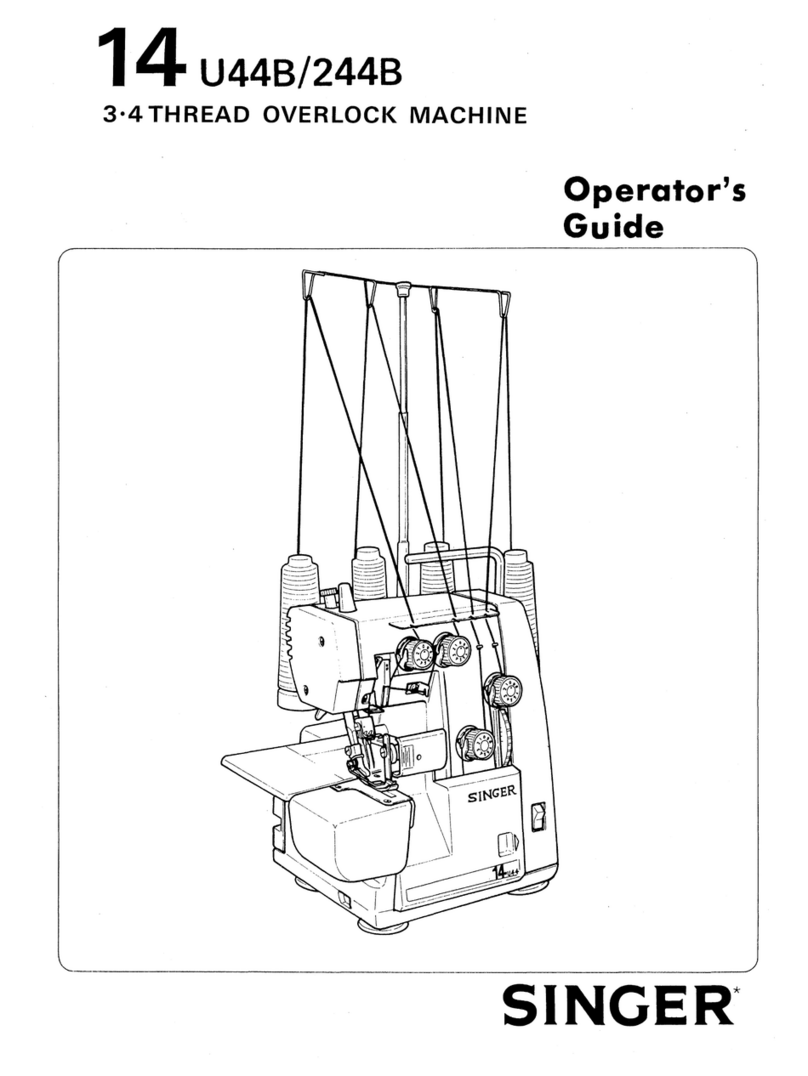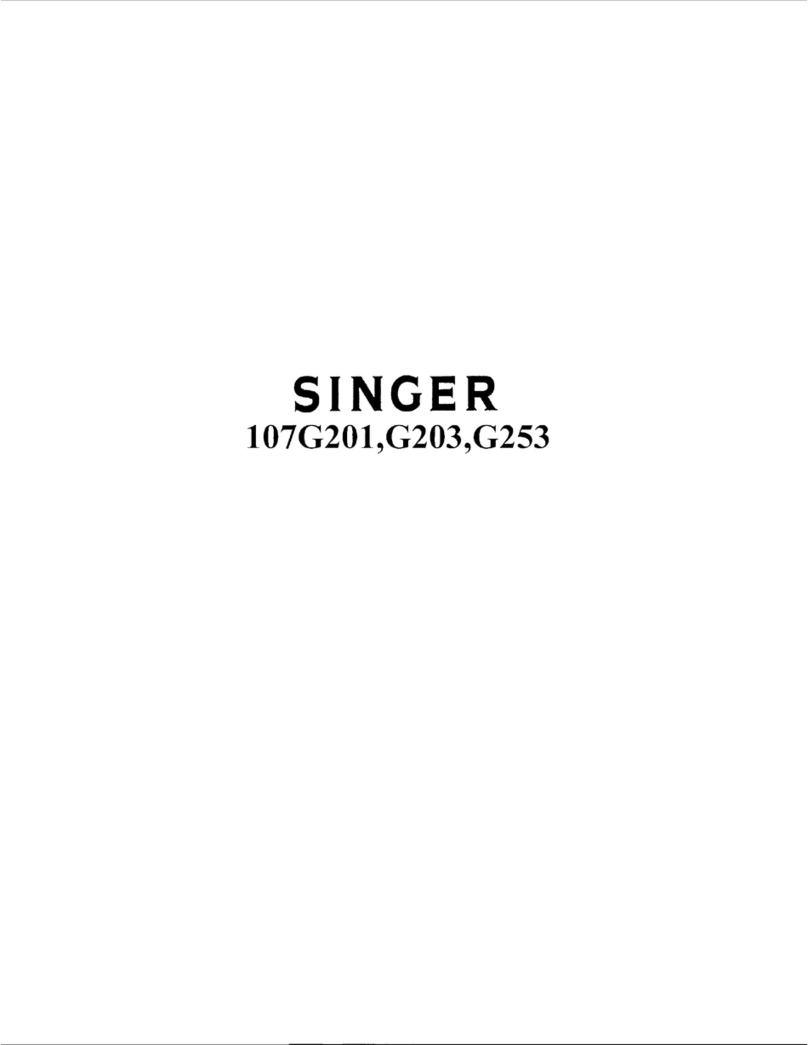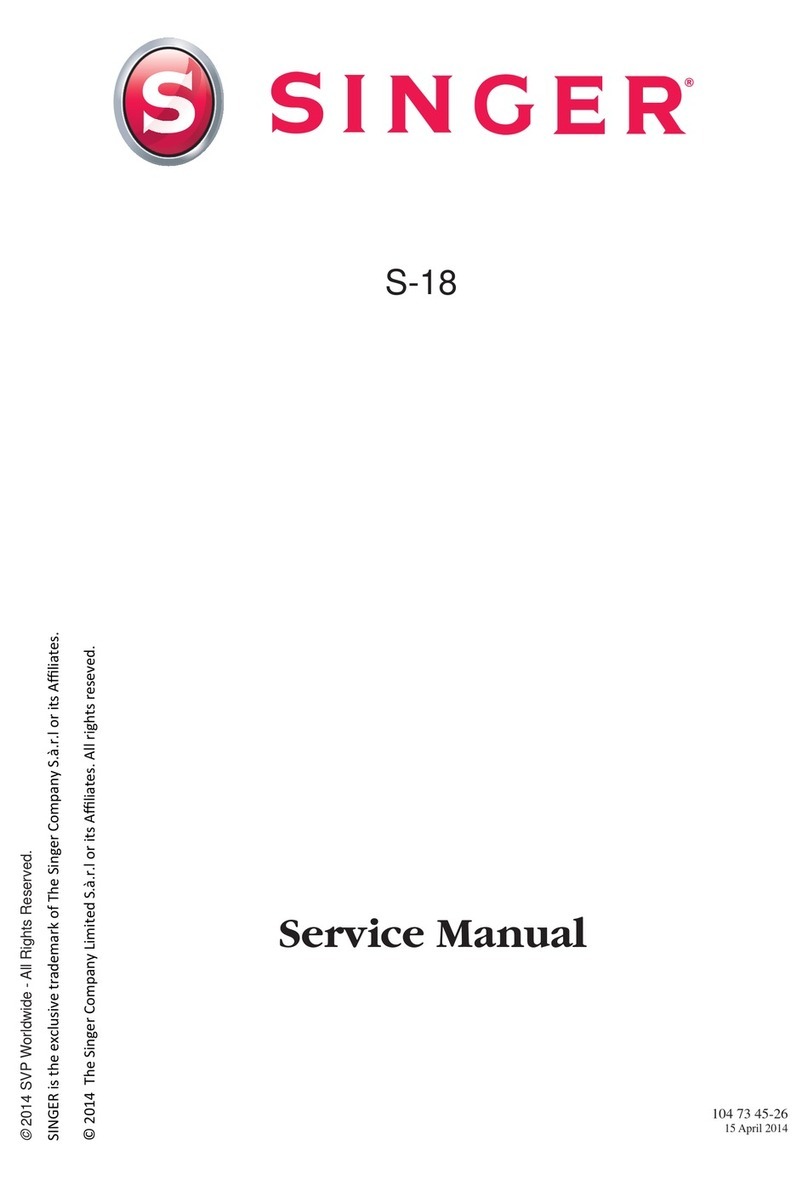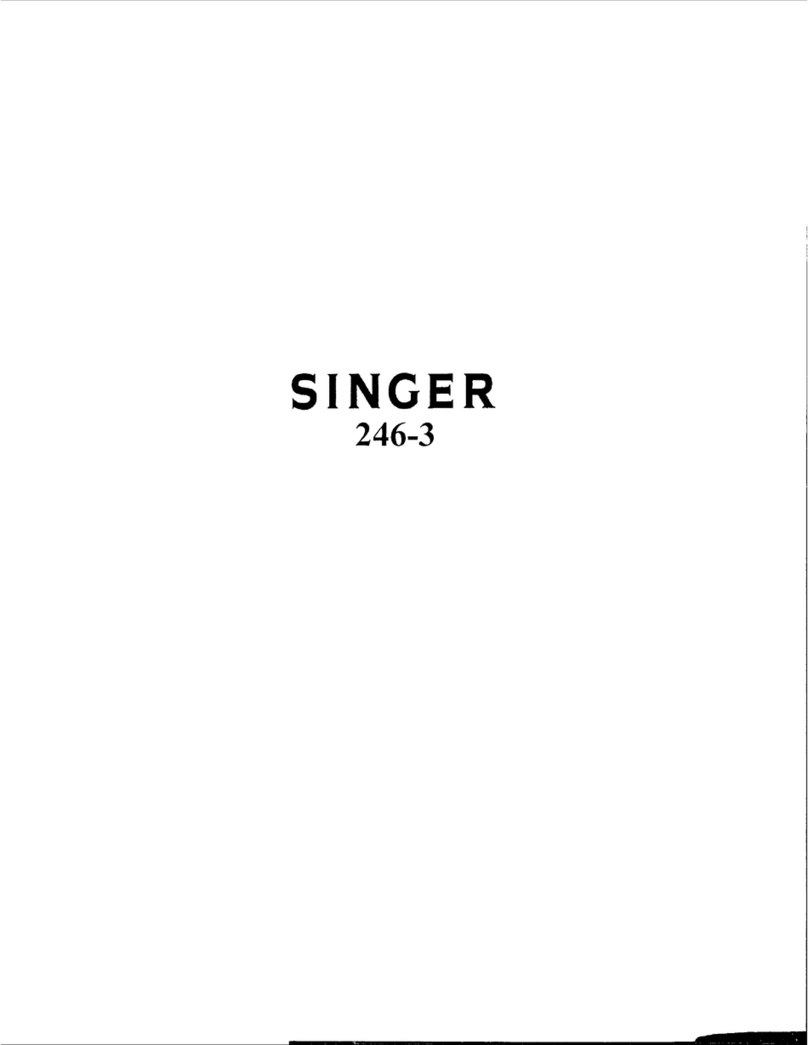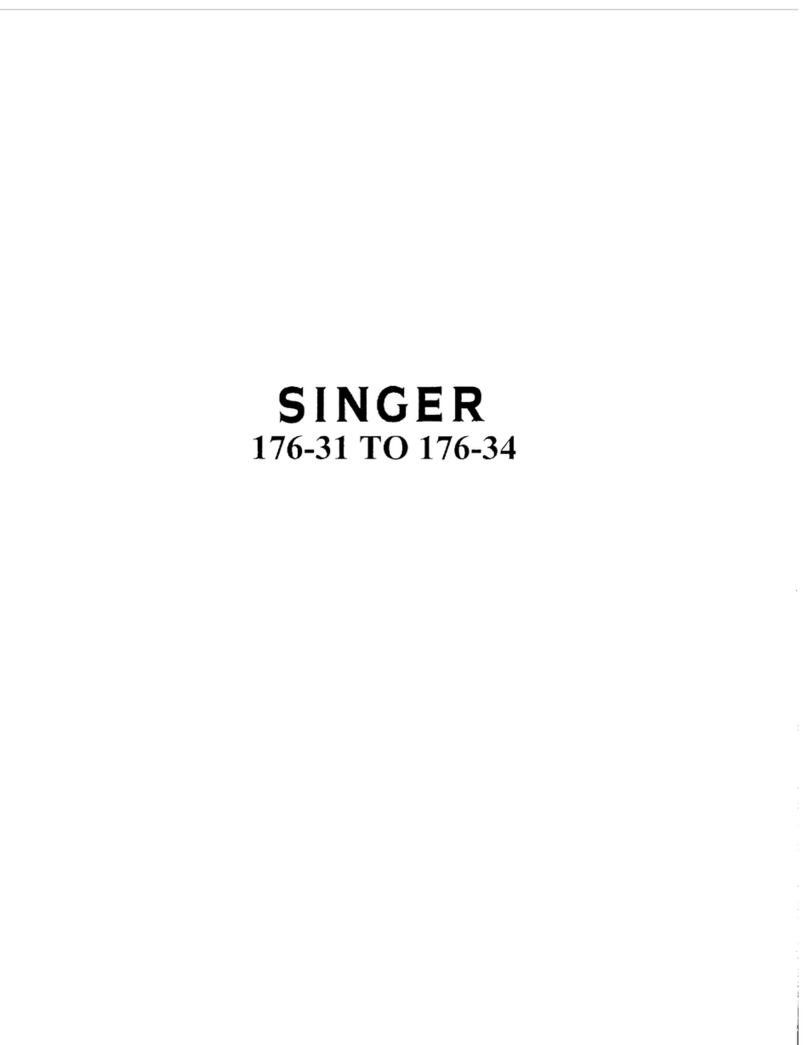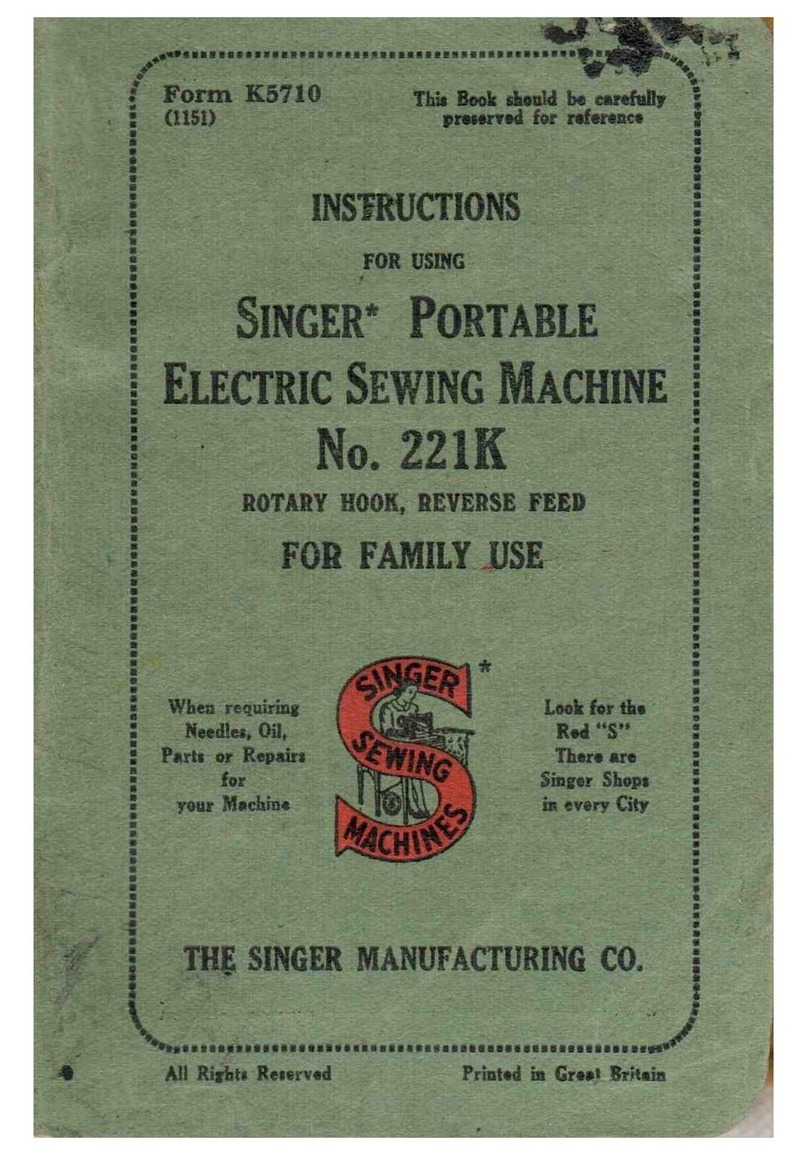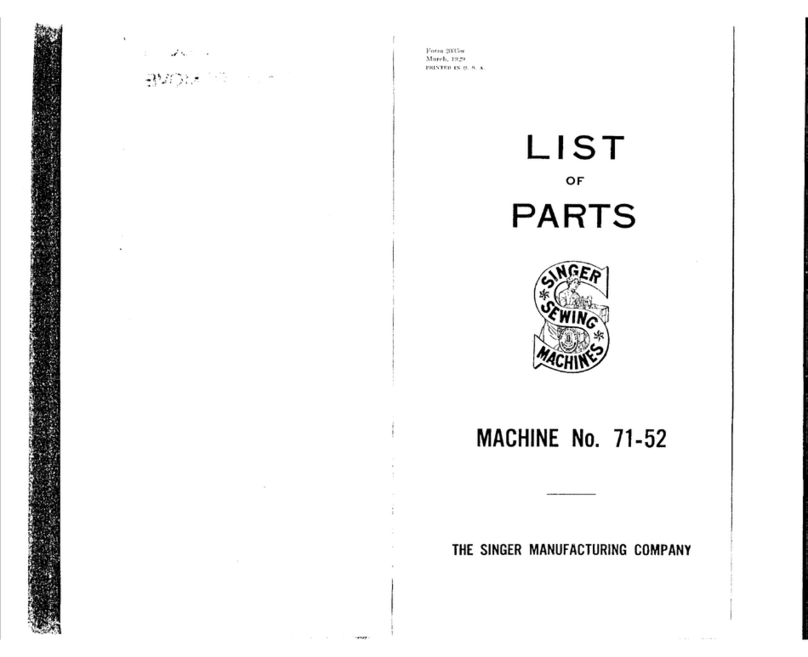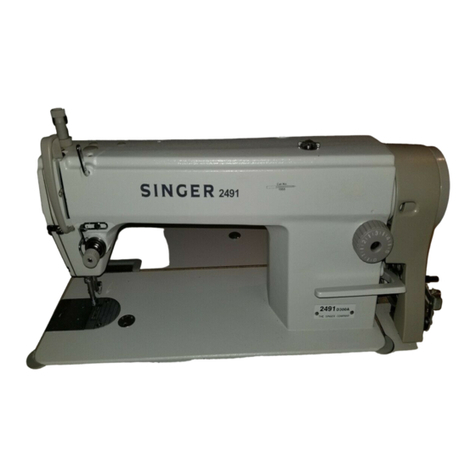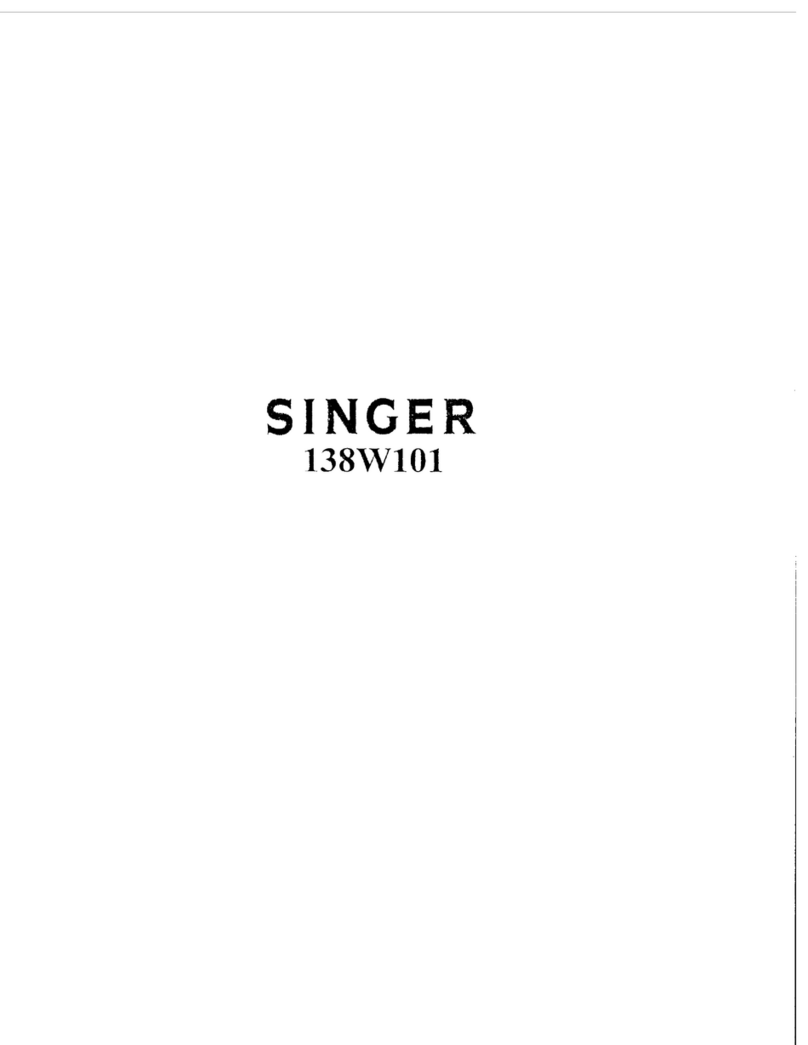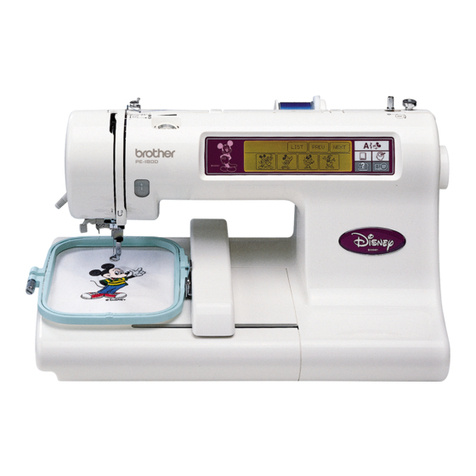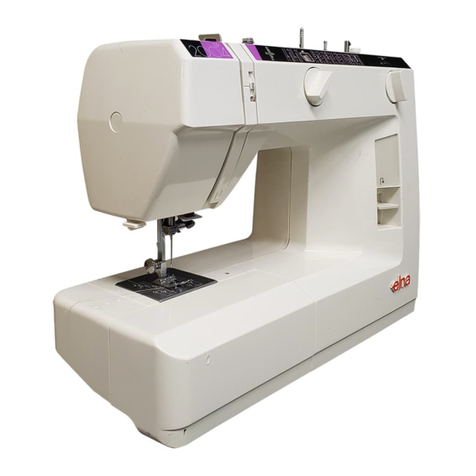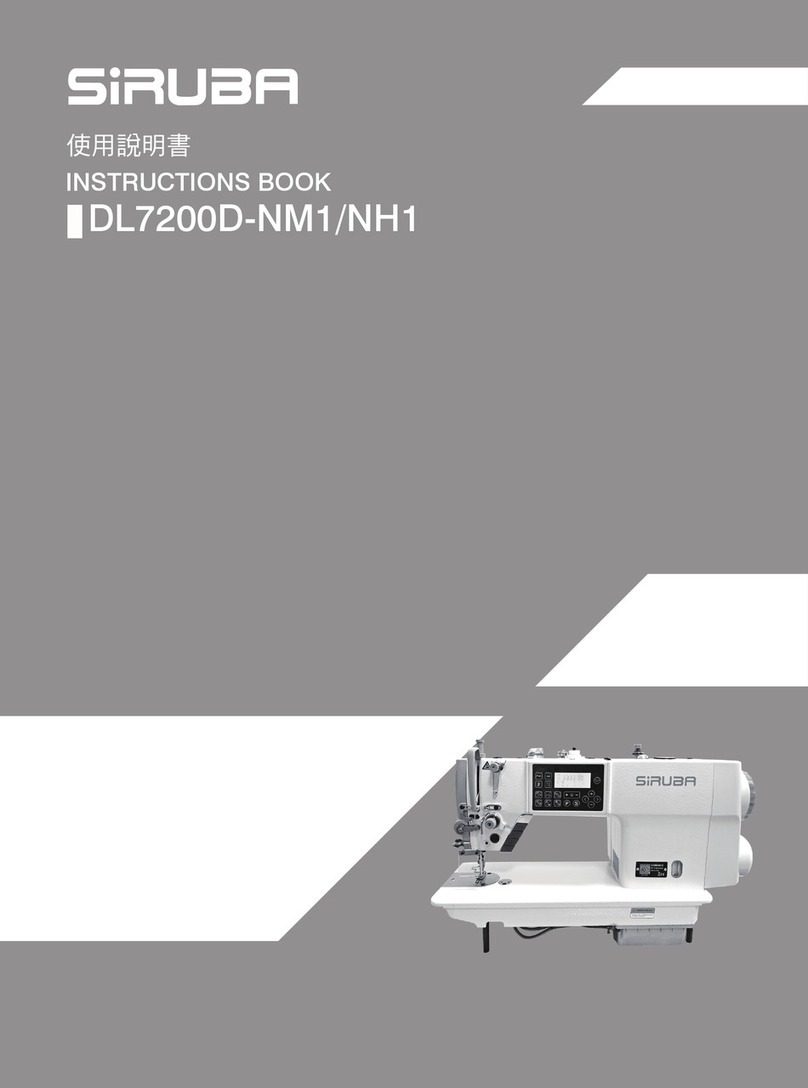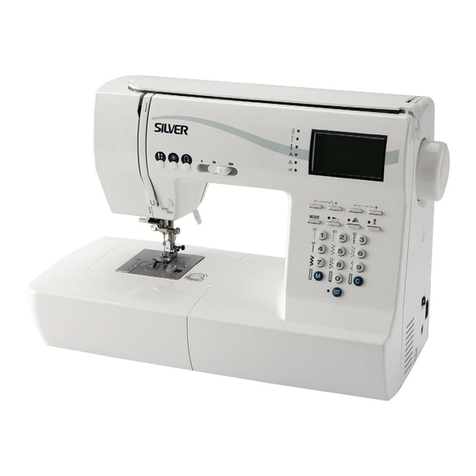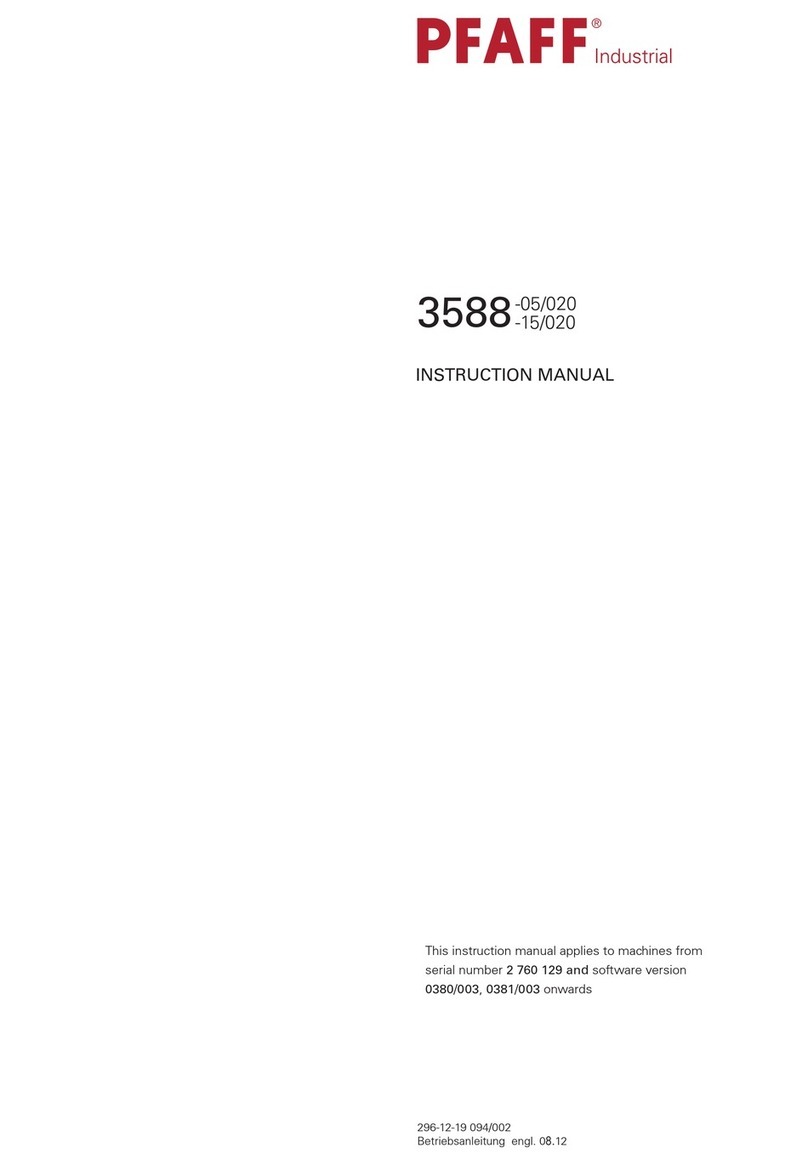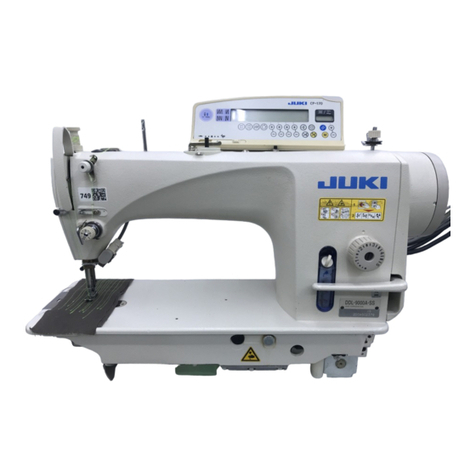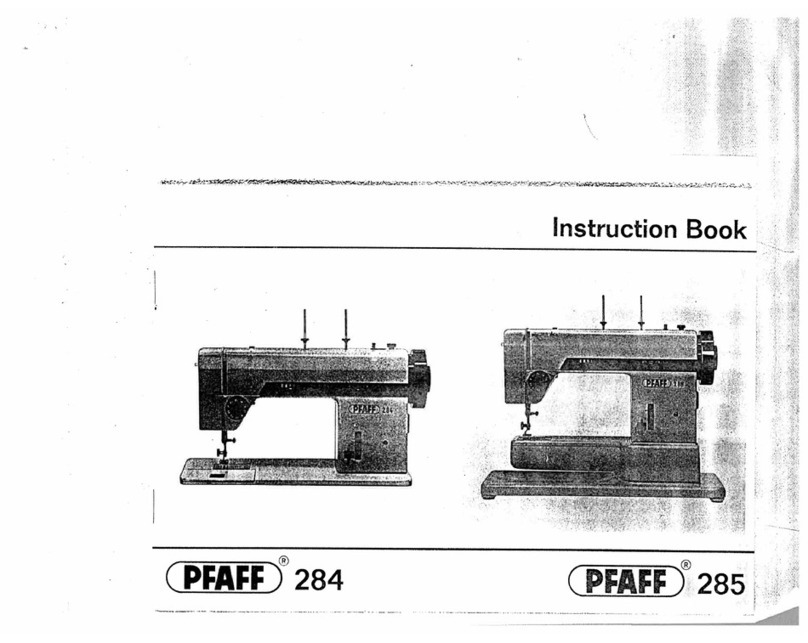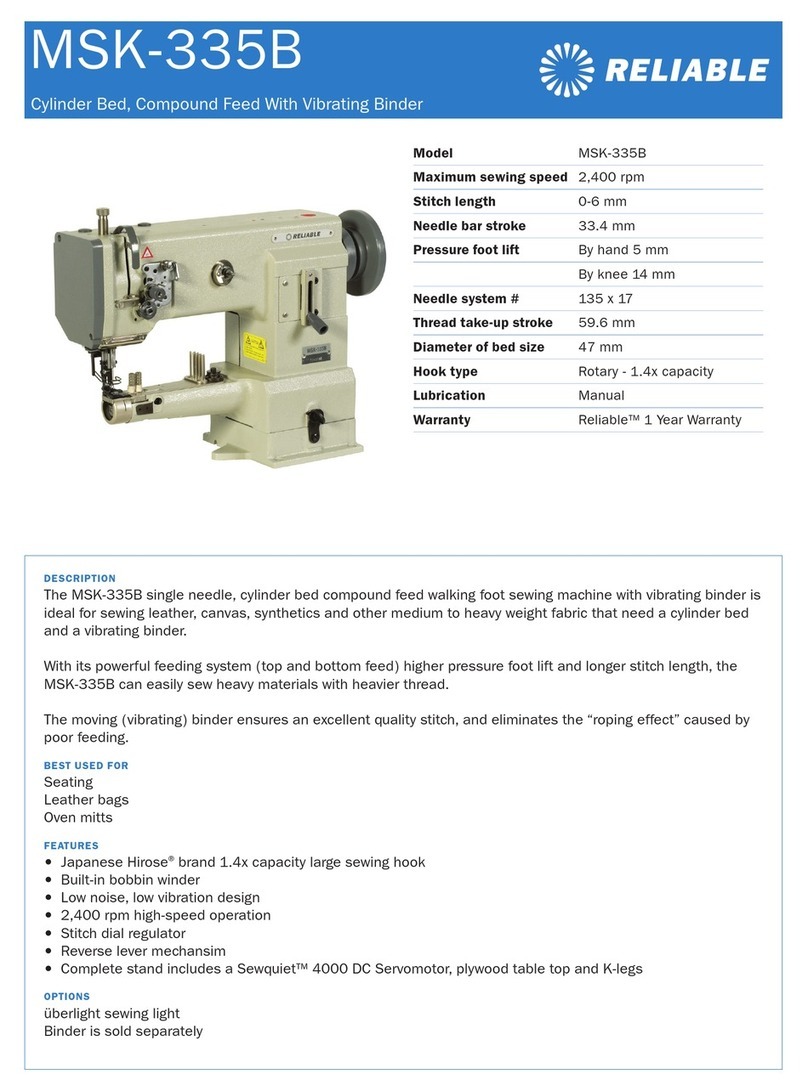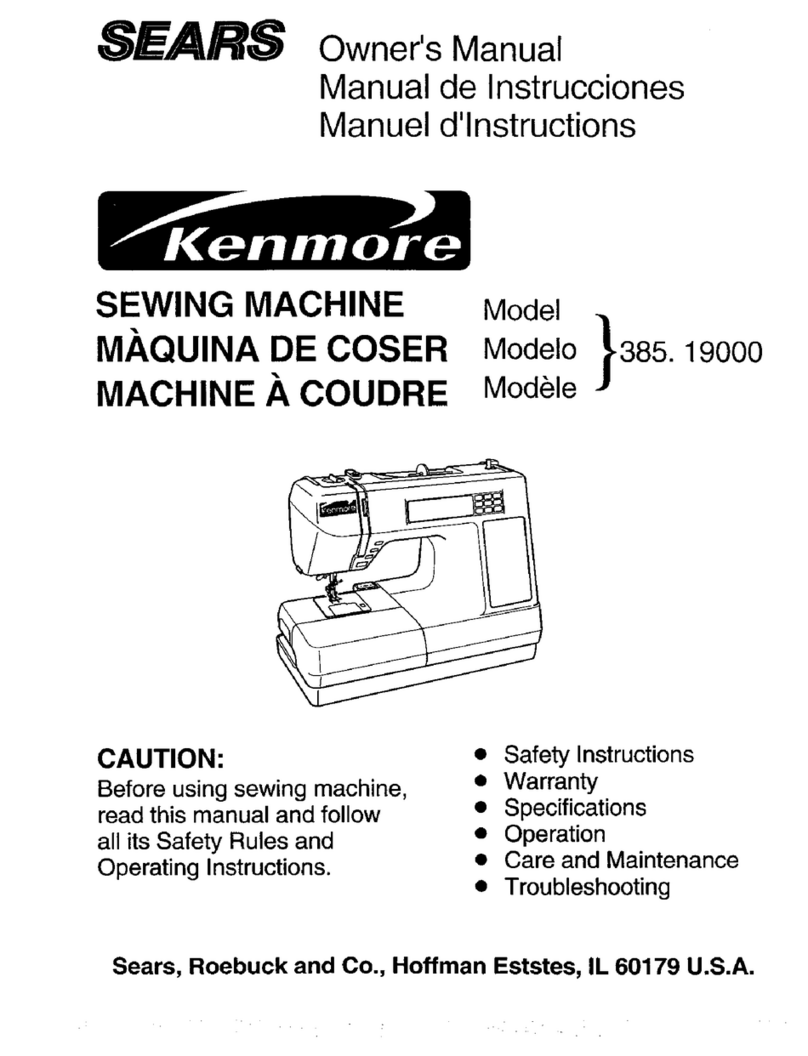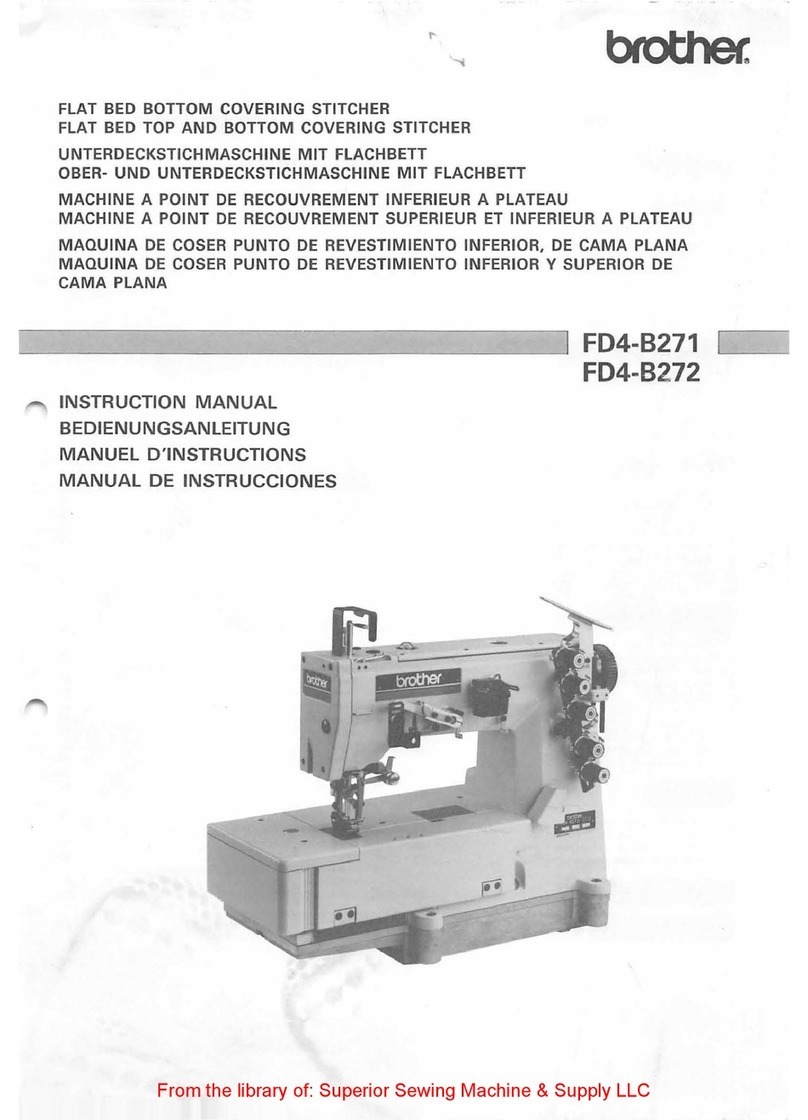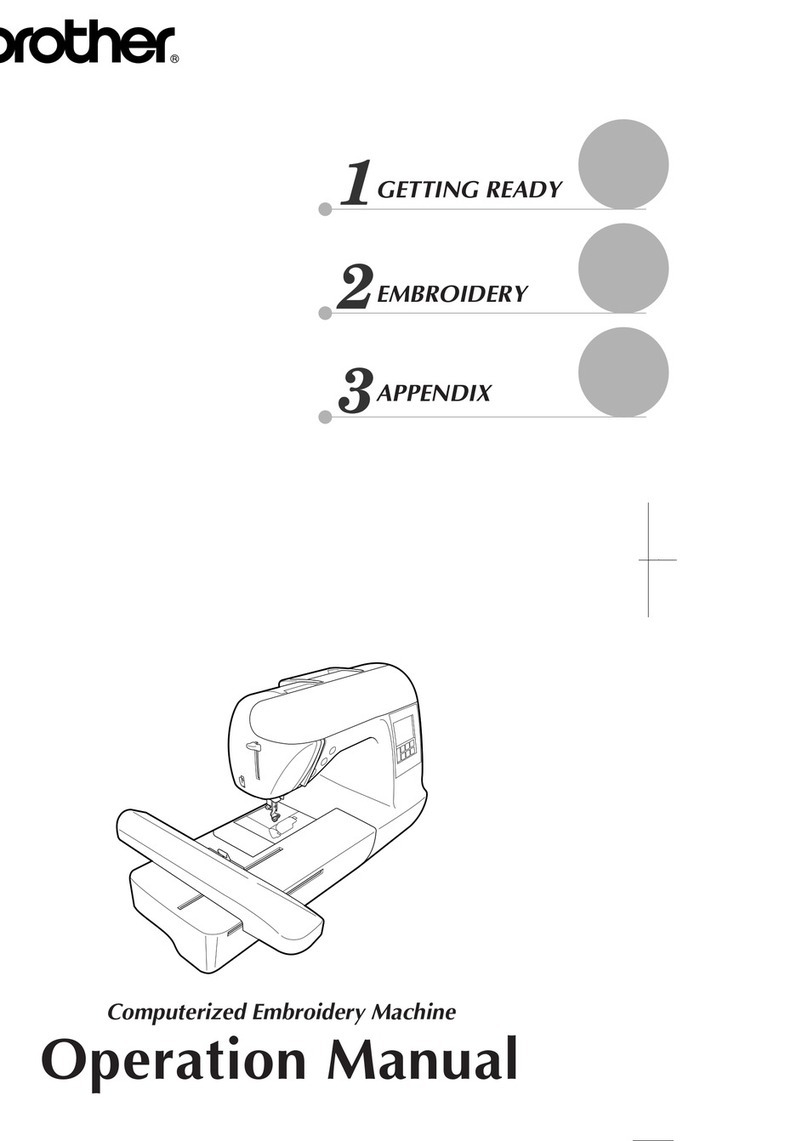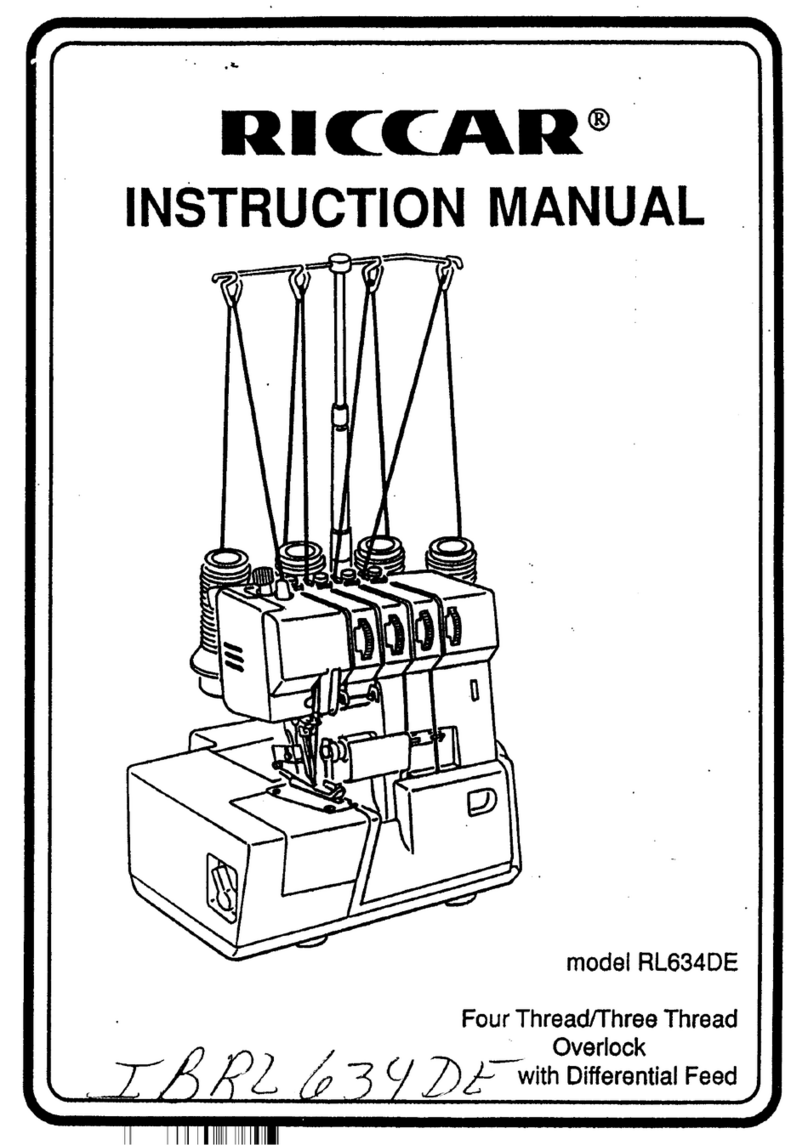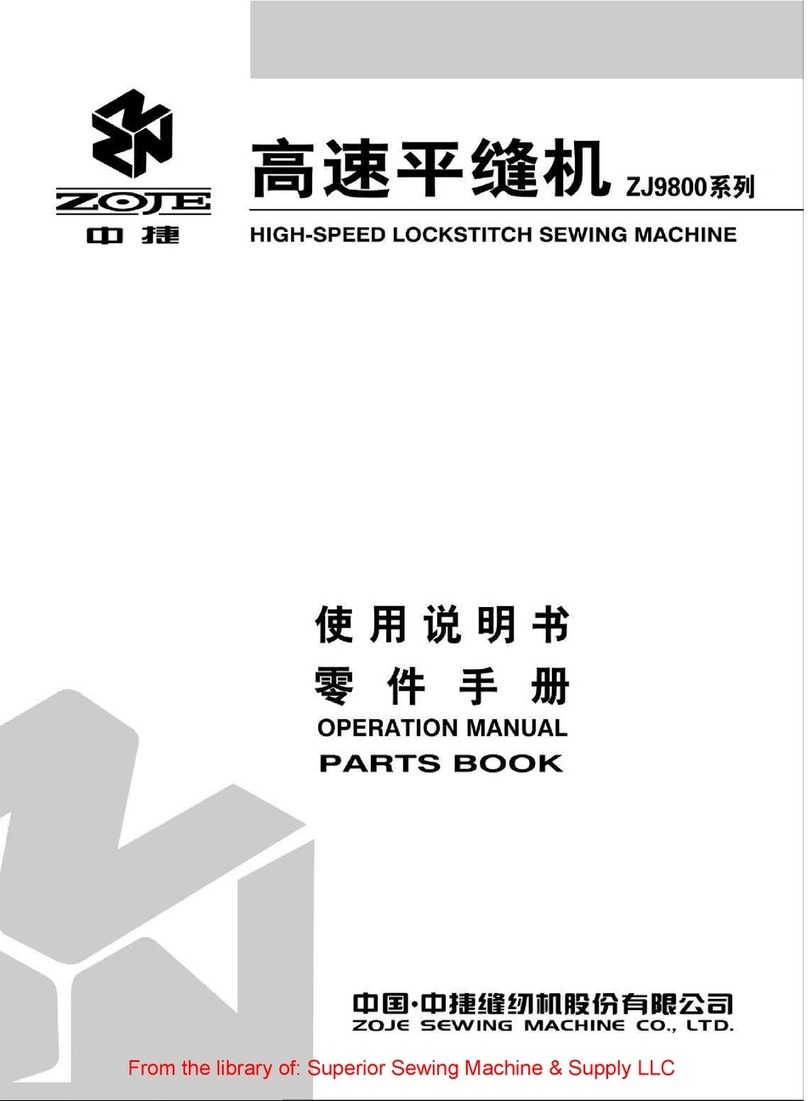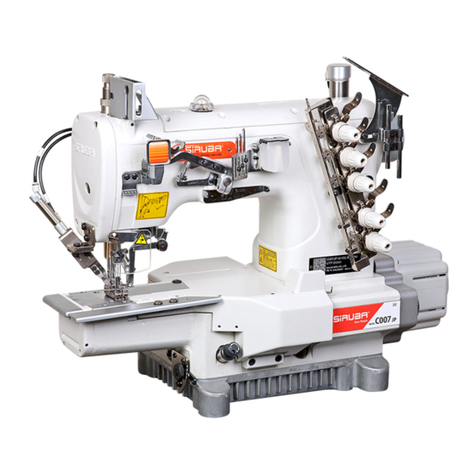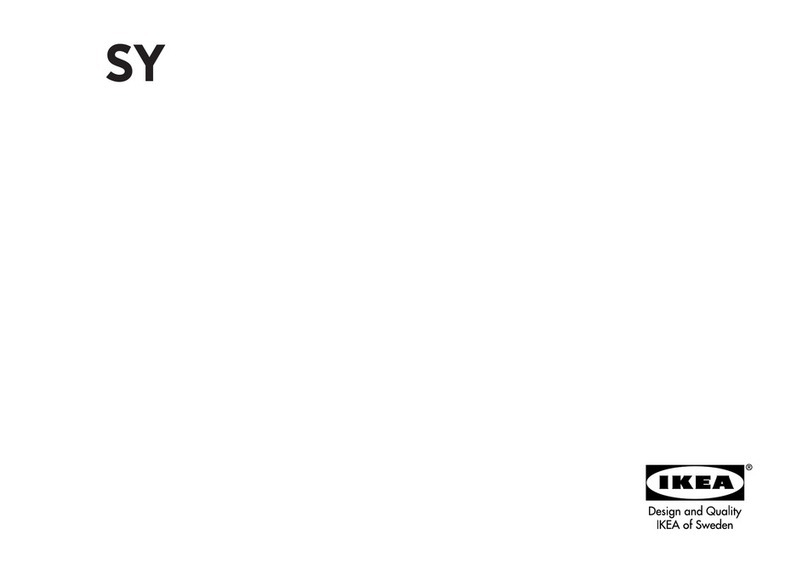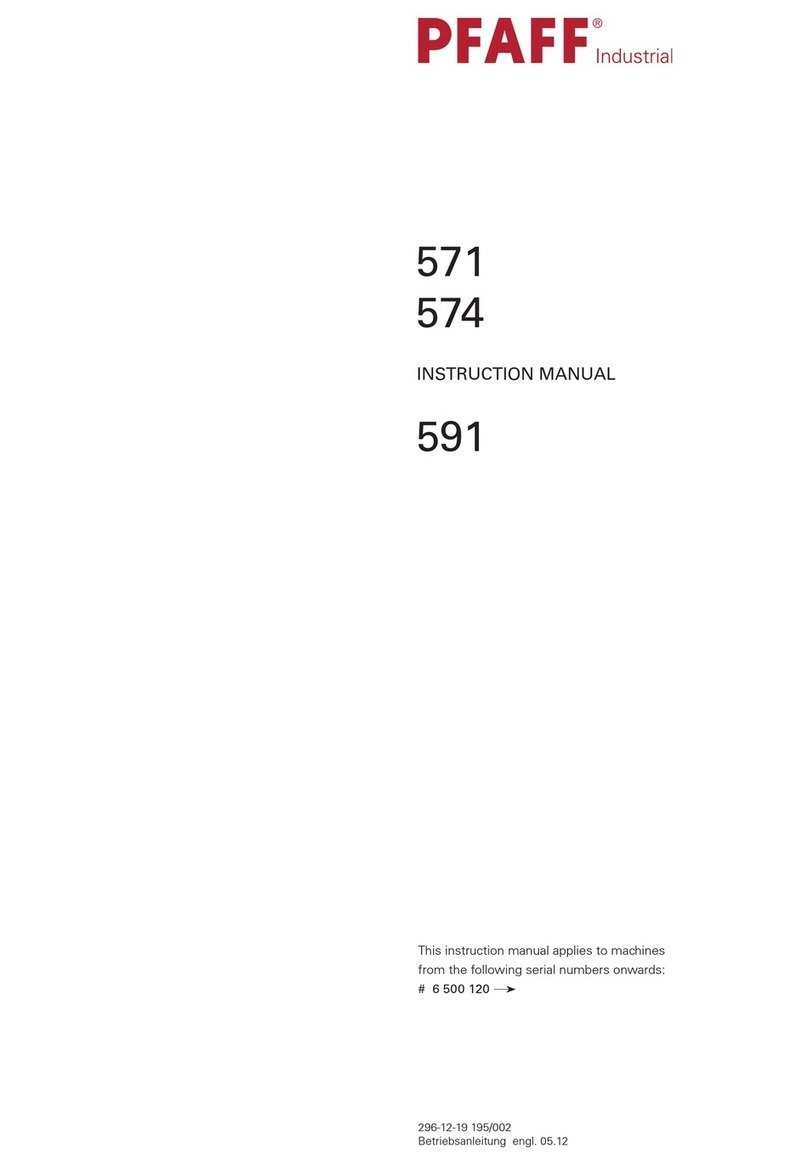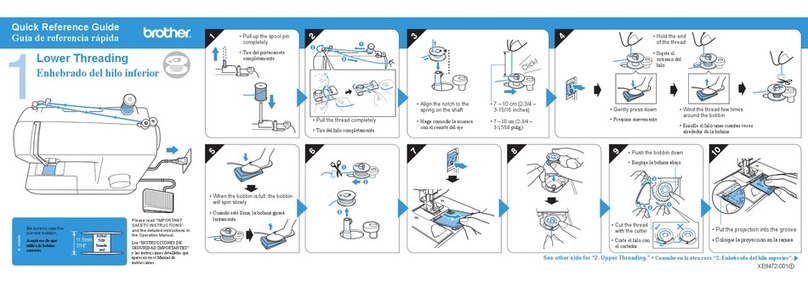
TABLE
OF CONTENTS
DESCRIPTION
OF
MACHINES ••••••••••••••••••••.••• 3
OPERATION•••••••••••••••••••••••••••••••.•••••••••••.••• 3-6
ADJUSTMENT••••••••...••.•.••••.••.••••••••••••••••••• 6-10
Accessories
•.••••••••••.•••.••••••••••••••••••••••••••••58-79
Adjusting Device••...••••••••••••••••••••••••••••••••••••• 36
Arch Clamp•••••..••••••••.••.•••••.•••••• 12, 40-44, 52,
56
Arm
Shaft,••••••••.•.••..••••.•••••••••••••••••••••••••••••.•
14
End
Play
Removal••••••••••••••••••••••••••••••••••• 8
Barring,•••.••••••••••••••••••••••••••••••••••••••••••••••••••• 3
Buttonholes•••••..••••••••••••••••••••••••••••••• 42,
52
Pockets
••••••••••••••••••••••••••••••••••••••••••• 46,
50
Bell Crank••••••••••••••••••••••••••••••••••••••••• 8, 22,
52
Belt Guard••••••••••••••••••••••••••••••••••••••••••••••18,
58
Belt Loop
Tacking...................................
3,
56
Belt Tension••••••••••••••••••••••••••••••••••••••••••••••••• 9
Bobbin,
•.....................................................
24
Removal
•••.•.•••.•••.•.•••••••••••••••••••••••••••••••. 4
Winding
.••.••••••.••••••••••••••.•.••••••••••••••••••••• 5
Bobbin
Case,
••••••••••••••••••••••••••••••••••••••••••.•••• 24
Remova1...
••
••••••
••
••••••••
•••
•••••••
••••
••
••
•••••••
••
4
Replacement
••••••••••••••••••••••••••••••••••••••••••
5
Threading•••••••••••••••••••••••••••••••••••••••••••••• 5
Bobbin Thread
Tension..................................
6
Bobbin
Winder,
•.••••.•.• •••••••••••••••••••••••••••••••••
32
A.....
.1ents
••••••••••••••••••••••••••••••••••••••••
5, 6
Bow Fas.dning
.........................................
3,
42
Brake Installation•••••••••••••••••••••••••••••••••••••••••
10
Brake Lining Care•••••••••••••••••••••••••••••••••••••••• 10
Button
Clamp
•.............••.•••.•......••.•••••.••..•.....
34
Button Sewers•••••••••••••••••••••••••••••••••••••• 3, 36-38
Cam,
..............................................
3, 38-52,56
Timing
•..••••••.••.••..•••••.•..••••.•••.••......•••••.•
8
Clamp Lifting Mechanism••••••••••••••••••••••••••••
3,
22
Cleaning
.•................•..........•.......•.•...•..........
4
Clearance under Clamp
....•..•..........•..............•••
3
Covers
.•..•..•......
······•••••••••••••••••••••••
.•....•
18,
36
Description
of
Machines••••••••••••••••••••••••••••••••• 3
Driving
Arm,
..............................
.
...
.
.............
20
Adiustment.............................
.
..............
7
End
Play
Removal
(Arm
Shaft)••••••••••••••••••••••••• 8
Engaging
Arm,
......................................
.......
28
Adiu
stment....................
.
.....................
..
9
~
~=~e~~J:
rs~~Sc~;.;r•
•••
•••••••••••
•••
••••
o o
••••
o
••••
31
42
Feed
Plate
Carrier Bar •••••••••••••••••• 12, 36, 40,
56
Feed
Plate
Positioning
••••••.••
••
..•••••••••••.•••••.••.• 7
Flat
Bed
Work
Plate
•••••••••••••••••••••••••••••
3,
54, 79
Gauge 239369
..........................
.
..
...
..
......
..•. 6, 1
Interlocking Arm................................
.......
26
Knife
Bar
.........••.......
•••••••••••••••••••••••••••••••••• 16
Knife Holder•••••••••.••••.••••••.••••••.•.••.••.•••..•••••• 42
Knife
Thread
Holder
...........................
.
...
.
.....
.
38
Knives,
...•........•..............
....
...........
.
.......
18, 42
Adiustment•••.•.•••.•.••••••••••••.••.••••. •••••••••••• 8
Lateral
Rock Shaft•••••••••••
••
•••••
••••••••••••••••• 20,
36
Length of Tack Adjustment•••••••••••••••••••
••
.
••
•
••••
• 1
Lifting
Arm
....
····•••••••••••••
••
•
••
•
•••
•
••••••
•
••••
•
•••••
•• 6
INSTRUCTIONS FOR ORDERING••••••••••••.••••.•••
11
PARTS LIST••••••••••••••••••••.••••••••.••.••••••.•.•• 12-79
NUMERICAL LIST•••.•••••••••••••••••••••••••••••••• 80-84
INDEX
Line
Tack•••••••••••••••••••••••••••••••••••••••••••••••••••• 3
Link
Arm
Adjustment••••••••••••••••••••••••••••••••••••• 7
Longitudinal Rock Shaft.•••••••••••••••••••••••••• 20, 36
Lubrication and Cleaning•••••••••••••••••••••••••••••••• 4
Machine
Pulley,
•••••••••••••••••••••••••••••••.••••••••
3,
14
Driving
Accessories
••••••••••••••••••••••••. 7
4,
76
Machine
Pulley
(loose), Packing••••••••••••••.••••••• 4
Needle,••••••••••••••••••••••••••••••••••••••••••
3,
4, 36, 40,
48,
6G'
Setting..................................................
4
Sizes
....................................................
4
Needle Bar,•••••••••••••••••••••••••••••••••••••••••••••••• 22
Height
Setting.......................................
6
Stroke..................................................
3
Needle Bar Crank••••••••••••••••••••••••••••••••••••••••• 14
Needle Thread Tension•••••••••••••••••••••••••••••.•••• 6
Oiling
..•...•...•.•...................•........................
4
Oscillating
Shafts••••••••••••••••••••••••••••••••••••••••• 6
Recoil Absorbing Mechanism••••••••••••••••••••••• 9,
26
Sewing
Strops
...........................................
3,
44
Shoe Tacking•••••••••••••••••••••••••••••••••••••••
3,
40, 48
Size
of
Needles
............•.......•.................•....••
4-
~---,...._
,
..,.
Shuttle,••••••••••••••••••••••••••••••••••••••••••••••••• 24, 36
Timing
••••..•.•••••.•..••.....•..•.•..............••..•.
7
Shuttle Driver Adjustment•••••••••••••••••••••••••••••••• 7
Space
behind Needle••••••••••••••••••••••••••••••••••••••• 3
Speed
........
••••••••••••••••••••••••·····················..
...
3
Split
Feet
....•............••....••..................•........
44
Starting Lever,
......•....•......................•..........
26
Adiustments
••..••••.•...•...••..••.........•••.•.••.•.
9
Stop
Motion,
Brake
.......................................
26
Installation••••.•••.••••••.••••.•••.••.•.•••••••••••••
10
Stop
Motion Timing••.••••••.••••••••••.•..•..••.•••••••••.
lO
Tacking Adiustments
....................................•
1
Tacking Belt Loops
......•..•••.•........•.••.•.•...•
3,
56
Tension,
••••••••••••••••••••••.••••••.••..••••.•.•••..•••••••
28
Regulation
...••....•....•••..•...................••..•••
6
Tension Position Guide,••••••••••••••••••••••••••• 22, 23
Adiustment
.............................................
6
Thread Cutter on
Face
Plate
••••••••••••••••••••••••
3,
18
Thread Guide
.....................•........•......•.....
5,
28
Thread
in
9••••••••••••••••••••••••••••••••••••••••••••••••••••
5
Thread Retainers•••••••••••••••••••••••••••• 5, 28, 36, 42
Thread
Wiper...........................
22, 36, 44,52,
56
Throat
Plate
••••••••••••••••••••.••••••.••••• 18, 36, 40, 42
Tripping Mechanism Adjustment•••••••••••••••••••••••• 8
Tripping
Points,
.•.....•.....•.••..................
3,
38-50
Timing
...•.•.....••..•..•••..•..•....•....••••••.•...••.
.
lO
Twist
of
Thread......................................
.
.....
4
Uneven Winding, Correction for•••••••••••••••••
••
••••
5
"V"
Belt
Tension Adjustment••••••••••••••••••••
••
•
•••
9
Vertical Drive
Shaft
..........•.....•.....................
30
Width
of
Tack Adjustment••••••••••••••••••••••••••
••••
• 1
From the library of: Superior Sewing Machine & Supply LLC



